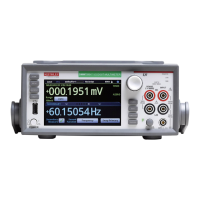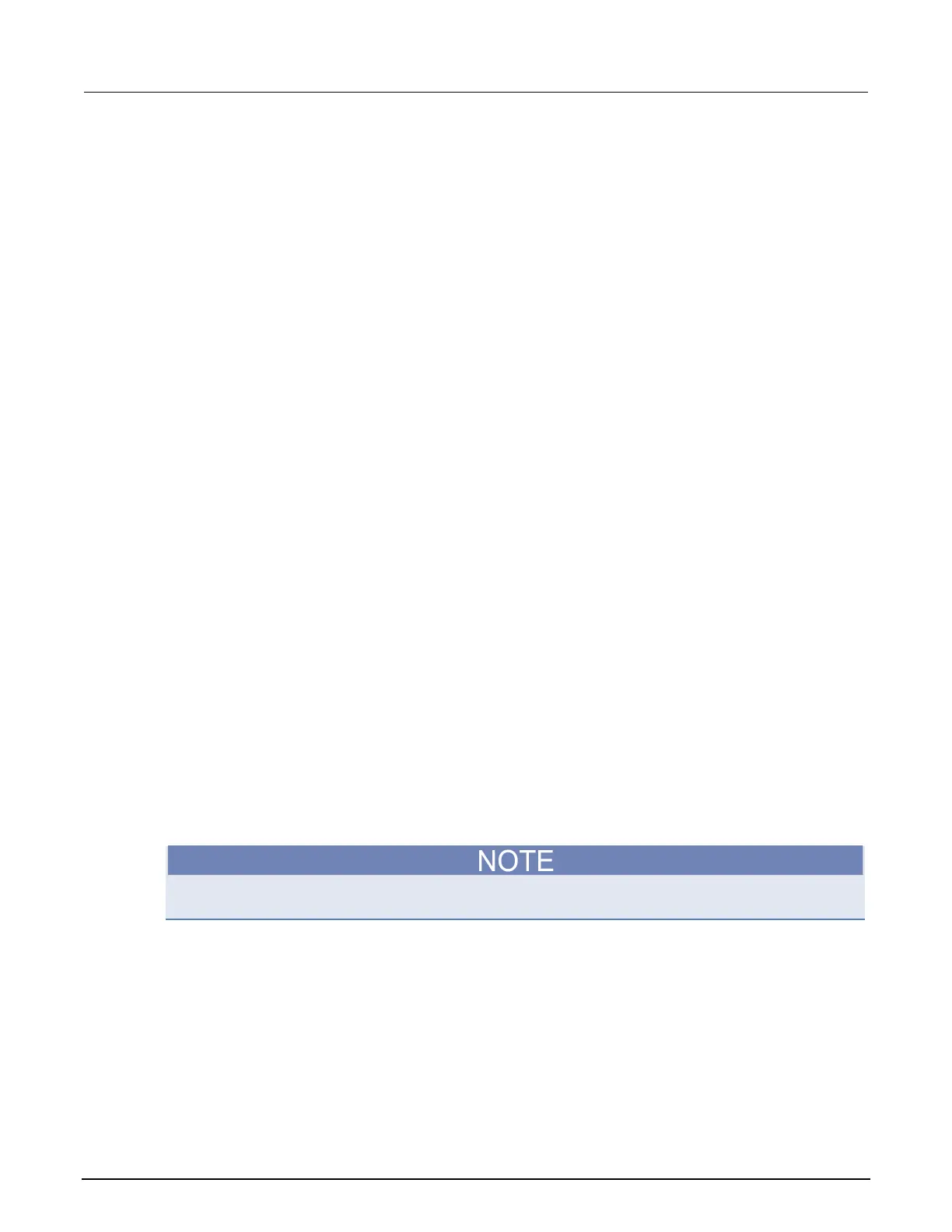2: General operation Model DMM7510 7½ Digit Graphical Sampling Multimeter
2-148 DMM7510-901-01 Rev. B / May 2015
Binning data with the Histogram
The histogram displays data from the active reading buffer in a bar graph with data organized into
bins. Data is binned until the statistics are cleared, the buffer is cleared, or a change to the histogram
scale settings occurs.
The legend at the bottom of the screen displays the reading buffer, buffer statistics, and the number
of bins.
If the top of a bin has a brighter green rectangle, there is additional data in the bin that is off the
screen.
You can change how the data is displayed:
• Touch the screen with two fingers and pinch or zoom to change the scale of the displayed graph.
• Select a histogram point to display the bin label and count.
• Use the options in the Data and Scale tabs to change how data is displayed.
Setting up the Histogram
To set up the Histogram:
1. Press the MENU key.
2. In the View menu, select Histogram.
3. Select the Data tab.
4. Select the Bin Buffer. This reading buffer contains the data that is binned.
5. Select the Scale tab.
6. Set the Minimum Boundary to the lowest value of data to be binned. Any data below this value
is binned in the low outlier bin.
7. Set the Maximum Boundary to the highest value of data to be binned. Any data above this value
is binned in the high outlier bin.
8. Set the Number of Bins to the bins in which to group the data. Two additional outlier bins are
added to the number of bins to capture data that is outside the specified boundaries.
9. In most cases, set Method to SmartScale. SmartScale selects either the Auto Bin or Fit method –
whichever is most appropriate. Fit adjusts the y-axis so that the tops of all bins are visible; Auto
Bin redistributes the data evenly in the bins based on present minimum and maximum
boundaries.
You can pinch and zoom to change the scale of data. When you adjust the data on the screen, Auto
Scale is turned off. You can turn it on in the Scale tab.

